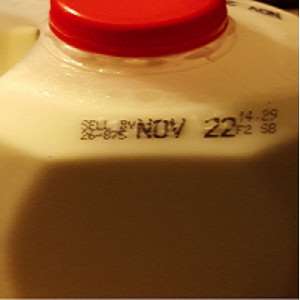By Marianne Buza
Consumers are expressing more interest in knowing how their food is handled, what is in it and where it comes from. Dairy farmers care about their cows and are passionate about their work. People in the dairy industry know how hard farmers work to have healthy and well cared for cows; the problem is it is one of the best-kept secrets from the rest of us.

One way the dairy industry is striving to ensure excellent animal care is the National FARM Program. FARM stands for Farmers Assuring Responsible Management. FARM was developed by the National Milk Producers Federation with support from the national dairy check-off, national beef check-off and Dairy Management Inc. to demonstrate that dairy farmers are dedicated to providing the maximum level of animal care and milk and meat quality. In the United States, 98 percent of the milk supply is enrolled in this program. The FARM program works by providing animal care guidelines that dairy farmers must follow to participate in the program. Dairy farms enrolled in the FARM program are assessed by trained evaluators and are given feedback on how well they are doing to achieve continuous improvement. The program’s integrity is safeguarded by having third-party verifiers who inspect a percentage of dairy farms enrolled in the FARM program. The newest version, FARM 3.0 has been released and was put into effect on January 1, 2017.
Some of the topic areas covered under the FARM program are: health, animal handling, nutrition, housing, equipment, milking procedures, and transportation. Farms that are not compliant with the farm program will either receive a Mandatory Corrective Action Plan (MCAP) or a Continuous Improvement Plan (CIP). Both of these help support the continuous dairy farm improvement goals of the FARM program. MCAPs have a maximum of one year to be reconciled before the farm is placed on probation of formal suspension. The time allowed for CIPs to be corrected is determined by the evaluator. It can range from 1 to 3 years.
Dairy farms in the FARM program have detailed herd health plans that were developed closely with their veterinarian and other industry consultants. These plans not only map out the herd health goals but improve farm efficiency and reduce disease risk. Dairy farms in the FARM program must have a signed agreement with their veterinarian establishing a Veterinarian/Client/Patient Relationship or a VCPR. This indicates that a veterinarian works with the health of the animals on that farm on a regular basis.
Employee training also is mandatory under the FARM program. Employees must be properly trained with documented training at time of hire and annually. They must be trained in basic stockmanship and any other specific animal care responsibilities they have on the farm. For example, an employee who feeds calves, must have basic stockmanship training and proper calf feeding and handling training. Also, all employees must sign a dairy cattle care ethics agreement. This agreement must be renewed each year to ensure all employees understand that the poor treatment of cattle will not be tolerated. Employees also promise to report any signs of abuse, neglect, harm or mishandling of the animals to a supervisor.
One major change with the FARM 3.0 program is the banning of tail docking on dairy farms. In the past, docking ½ to ¼ of the bottom of a dairy cow’s tail was common management practice on some farms. It was done to keep cows clean, reduce mastitis and increase ease of attaching the milking unit to the cow. As of January 1, 2017, no farms enrolled in the farm program are allowed to dock tails on their farm.
The FARM program also requires dairy farms to have written Standard Operating Procedures (SOPs). The advantage of written SOPs is to increase the consistency and accuracy of tasks carried out on a dairy farm. It also helps farm employees improve and do a better job. SOPs help provide direction, improve efficiency and enhance communication with employees. Specific areas that require SOPs are newborn and milk-fed calves, cattle with disease, injury or pain, non-ambulatory animal management, and euthanasia methods.
A FARM evaluation also has an animal and facility observation phase. During this time, the evaluator looks for many management practices. They determine if all animals have access to clean fresh water, including newborn calves. They will look to see that the feed sources have nutrients for maintenance, growth, health and to support lactation. Non-ambulatory animals on the farm must have access to feed and water at all times. Cattle observations will cover locomotion scoring, body condition scoring, hock and knee lesion scoring and hygiene scoring. Farms in the FARM program should have 95 percent of the scored animals with a 2 or less on the 3-point scale. Of the cattle scored, 99 percent of them must have a body condition score of 2 or more on a 5-point scale. Of the cattle scored, 95 percent of the animals must have a hock and knee lesion score of 2 or less on a 3-point scale. Of the cattle scored for hygiene, 90 percent of them must have a 2 or less on a 4 point scale.
The National FARM program is just one way dairy farmers want to assure you that they care about their cows, and they are passionate about what they do. So, when it comes to feeding your children the nutritious choice of milk, the FARM program is setting the highest standards of animal care and creating a culture of continuous improvement. If you want to find milk that comes from a Michigan processer look for the processing code 26-XXX near the sell by date.
Source: msu.edu